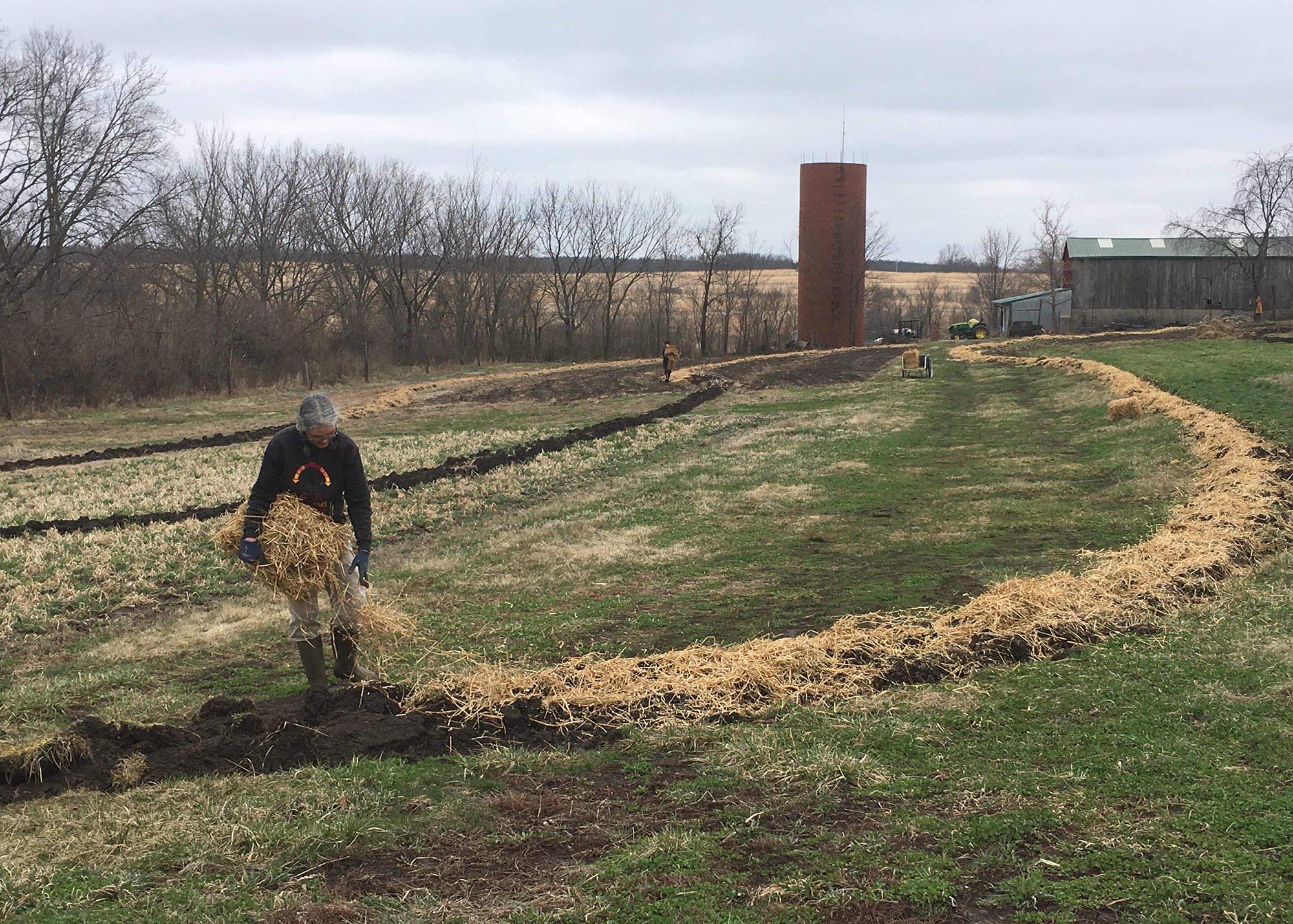Regenerative Agriculture
Since we began farming in 2003, we have seen a need to better manage water on the farm. Climate change has made the weather in the Midwest more variable and extreme, and significant rain events have frequently damaged our crops. We annually see rain events of over 5 inches at a time, and in 2015 we experienced a 70 day stretch with 36 inches of precipitation.
Our thin, ridgetop soils do not drain well in these conditions, and addressing this issue is a necessity if we plan to continue farming this land. We have always resisted the option of installing drain tile in our fields to manage this water, and have looked for over a decade for suitable alternative systems.
In December 2019 we attended a workshop on Restoration Agriculture by Mark Shepard, and adopted the methods he has used successfully on his Wisconsin farm. Mark’s books Restoration Agriculture and Water for Any Farm advocate for perennial systems of agriculture, and the Masterline method of water management (berms and swales).
During our first year of adopting this farming system we have installed over 7,000 linear feet of berms and swales. These furrows and ridges serve to capture all the water that falls on the farm and distribute it across the landscape, rather than letting it quickly drain off, create erosion gullies, and waste the potential for storing that rainwater in our soils.
Our swales are pitched downhill at a one-percent slope, and carry water from our valleys to our ridges. The berms and swales are spaced 40 feet apart, creating alleys to farm annual or perennial crops, or to run livestock through.
We are in the process of planting the berms with perennial plants, namely trees and shrubs. These plans include planting chestnut, persimmon and paw paw trees, and elderberry and hazelnut bushes. Other perennial crops are planned of alleys, including strawberries and asparagus.
Livestock on the farm will include our two laying hen flocks, and a future flock of sheep for grazing and land management. Portions of the farm will be left to grow up as wildlife habitat to help further increase the farm’s diversity.
We have a long way to go (chestnuts take 10+ years to fruit!), so stay tuned.





Previous
Next